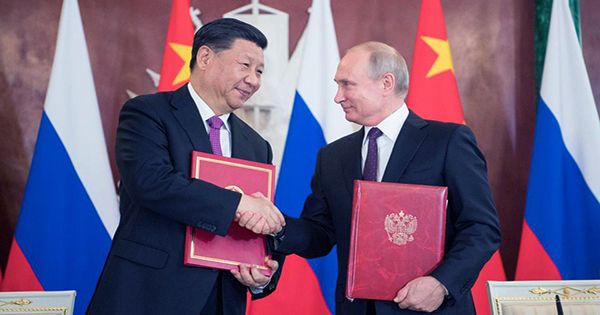Two countries have gone all-in as the information sphere becomes a more active and consequential arena of state rivalry. China and Russia have both developed sophisticated information techniques to further their geopolitical objectives, and their game plans are constantly changing.
Instead of relying on proxy troll farms to create massive amounts of divisive content, the Kremlin has moved to military intelligence assets to conduct more focused information operations that avoid platform-detection measures. In addition, fearful of accused for a pandemic that has claimed the lives of more than five million people globally, Beijing has grown far less hesitant to utilize “wolf warrior” ambassadors to spread conspiracy theories online. To keep its goal of a free and open internet alive, Washington will need to devise a counter-offensive strategy.
In the short term, Russia, a fading state by many criteria, strives to compensate for its relative inferiority by disturbing the institutions, alliances, and domestic politics of its neighbors and geopolitical adversaries. The Kremlin is not especially sensitive to attribution or concerned about repercussions because it stands to benefit a lot from public awareness of its operations.
As a result, the Kremlin employs misinformation to fuel turmoil and foster disorder in order to keep the transatlantic community confused, divided, and unable to carry out a confident, coherent foreign policy that may be damaging to its interests.
To do so, Moscow employs at least two approaches that reflect a progression in its strategy since its “sweeping and methodical” attempt to sway the 2016 presidential election in the United States. To begin, it regularly co-opts domestic voices and institutions within target societies in order to portray information operations as genuine advocacy, often by concealing trolls among the target population, renting local citizens’ social media accounts, or recruiting real activists to incite protests.
It does so in part to get around more advanced platform detection techniques, and in part to worsen the polarization of content control disputes in the US. Second, the Kremlin’s disinformers understand that they do not need to carry out a large-scale operation to create the idea that they or others have, and that the perception is enough to sow doubt about election results and fuel party animosity.
Moscow may thus use broad worry about the possibility of manipulation, particularly in an election setting, to achieve its objectives by saying that manipulation has occurred – even if no effective operation has occurred.
Meanwhile, China is a developing power with little to gain and a lot to lose by public awareness of its meddling. It desires a stable international order, but one that is more favorable to its interests than the existing US-led framework, unlike Russia.
As a result, its communication efforts are largely oriented toward boosting China’s image as a responsible global powerhouse and suffocating criticism that would ruin its reputation, while undermining democracy’s attractiveness by portraying the US and its allies as inefficient and hypocritical.
Beijing has used a three-pronged strategy to pursue these goals: piggybacking on the propaganda networks of other strongmen, fabricating the impression of public support, and co-opting discussions about its human rights record. Because China lacks its own influencer network, it must rely on the constellation of alternative intellectuals, many of whom are Western, who are a staple of Russian propaganda.
China’s wolf warrior diplomats often communicate with phony personas on Twitter, highlighting the challenge of creating support for pro-China ideas on a site Beijing has outlawed at home. In order to counter accusations of its human rights record, it uses hashtag campaigns and slick films to try to co-opt conversations about the oppression of Uyghur Muslims in Xinjiang.














